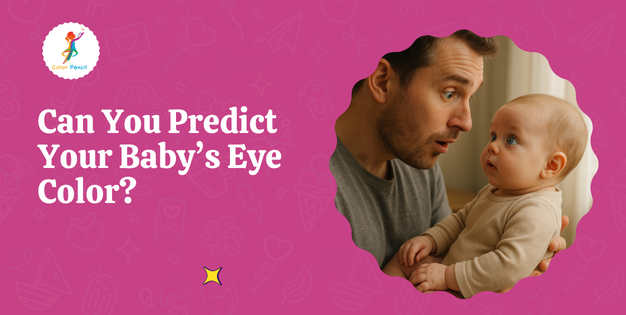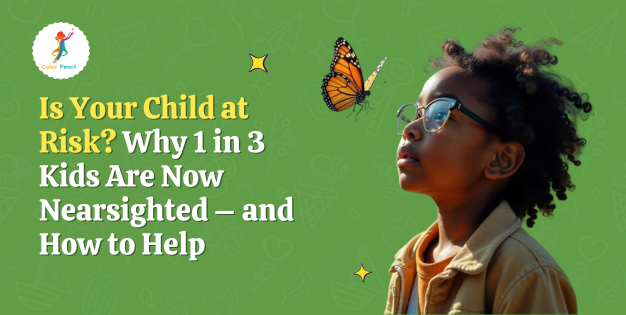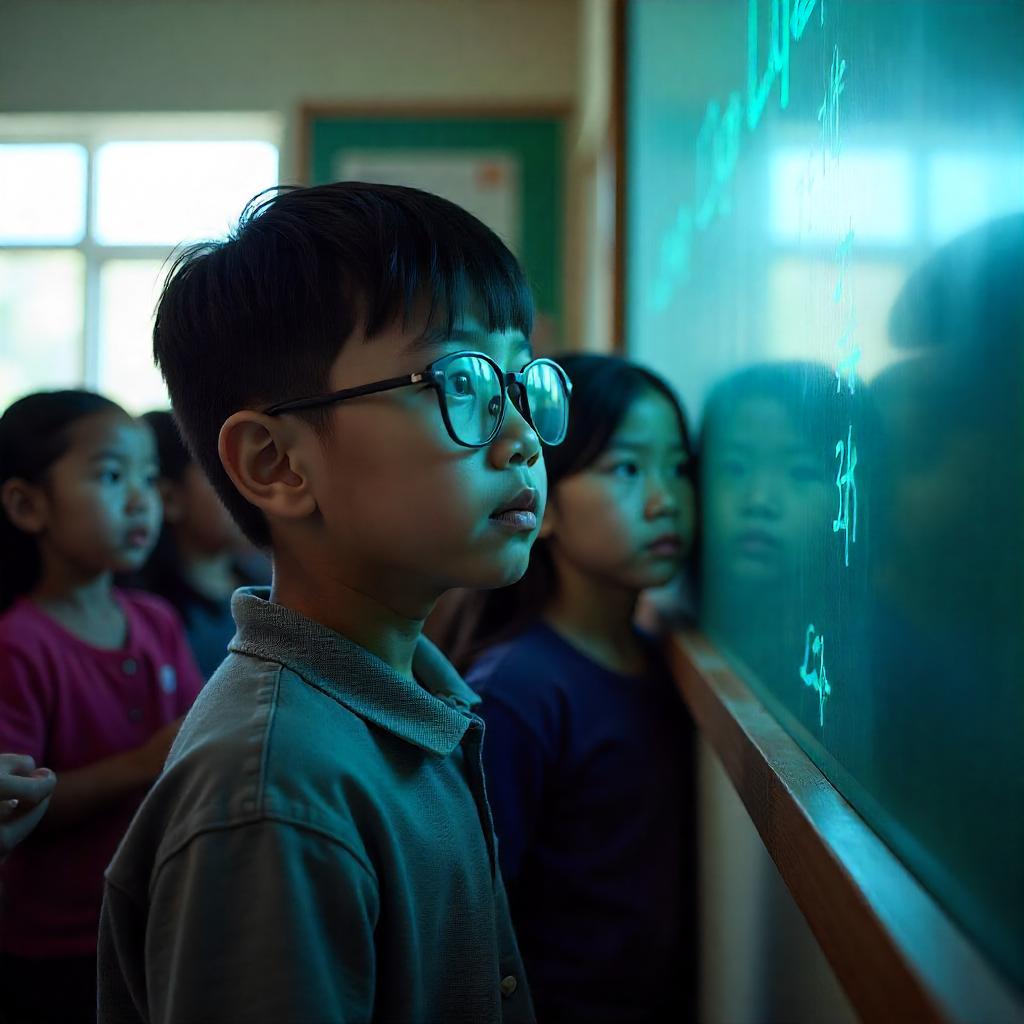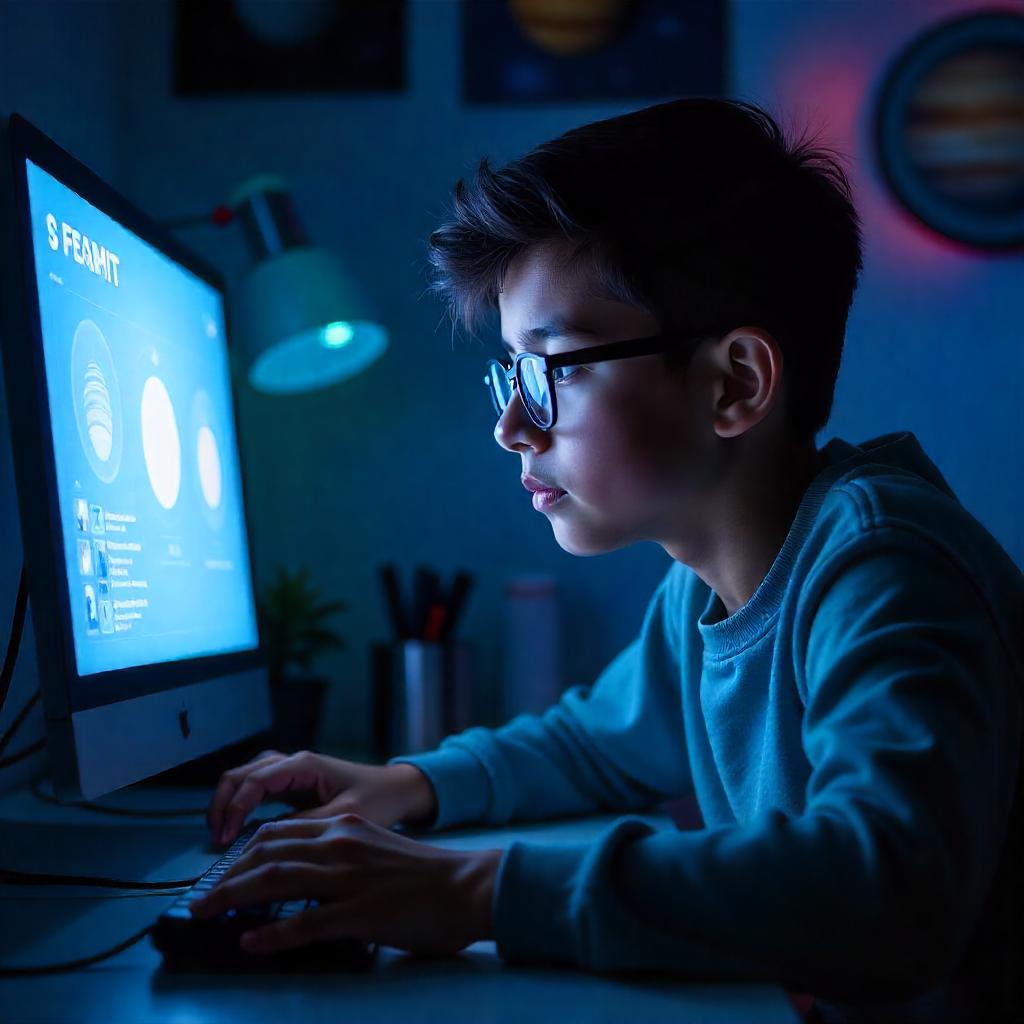
Can You Predict Your Baby’s Eye Color? When Do Newborns Get Their Eye Color for Real?
One of the most fascinating mysteries for new parents is when do newborns get their eye color. You might catch yourself gazing into those tiny

If you’re constantly reminding your child to “sit back from the screen” or “give your eyes a break,” you’re not alone. Myopia in children, or nearsightedness, has become surprisingly common. In fact, around 1 in 3 kids today are nearsighted, and that number is only growing.
Myopia isn’t just a minor inconvenience—it’s something that can impact every part of a child’s life, from learning to play to their overall well-being. But here’s the great news: there are effective ways to protect your child’s vision and slow down myopia’s progression, giving them the chance to see the world more clearly!
Let’s dive into what’s really going on with kids’ eyesight, what’s causing this increase in myopia, and what you can do to keep those little eyes healthy.

So, why are so many kids struggling with blurry vision these days? One of the main factors is our modern lifestyle. More time is spent on screens (think tablets, smartphones, and computers) and less time outdoors. This combination has shown to accelerate the onset of myopia in children.
Nearsightedness occurs when the eyeball grows too long from front to back, causing distant objects to appear blurry. Genetics can also play a role, so if you or your partner wear glasses, your child may have a higher chance of becoming nearsighted, too.
It’s not just about screen time or genetics; it’s a mix of factors. Studies show that kids who spend a lot of time doing “near work” (like reading or working on screens) and less time playing outside are more likely to become nearsighted.
Natural sunlight plays an important role in eye health, potentially slowing down the elongation of the eyeball that leads to myopia.
In short, modern habits combined with less time in nature are a big part of why children’s eyesight is worsening at such an alarming rate.

One of the tricky parts about myopia in children is that it often goes unnoticed—especially in younger kids who may not even realize they have vision issues. Here are a few signs to watch for:
If you notice any of these signs, it’s a good idea to schedule an eye exam. Early detection is key, as it allows you to take steps to slow down myopia progression before it becomes severe.
Fortunately, there are some simple (and even fun!) ways to help reduce the risk of myopia or slow down its progression. Here are a few strategies that eye experts recommend:
One of the best things you can do for your child’s eyes is to get them outside more often. Studies show that kids who spend at least two hours a day outdoors have a lower risk of developing myopia. Natural light benefits their eyes in a way that artificial indoor lighting can’t.
Encouraging outdoor play and activities that don’t involve screens can make a big difference in both eyesight and overall cognitive growth. Simple games that stimulate the mind are a great way to keep kids engaged and learning while taking a break from screens.

Let’s be real: totally eliminating screens isn’t realistic. But managing screen time can make a huge difference. Set boundaries around screen use and encourage regular breaks. The “20-20-20 rule” can help: for every 20 minutes on a screen, kids should look at something 20 feet away for at least 20 seconds. This gives their eyes a much-needed break from close-up focus.
Help your child develop habits that support their eye health. Encourage them to avoid holding books or screens too close to their face, use good lighting when reading, and, yes, remind them to blink! Blinking keeps eyes moisturized and prevents strain.
Scheduling regular eye exams, even if your child hasn’t shown any vision issues, is a proactive way to catch myopia early. Eye doctors can track any changes in vision and recommend options to manage it, such as special lenses or treatments designed to slow myopia progression.
For kids already showing signs of myopia, some newer treatments, like specialized contact lenses or prescription glasses, can actually help slow down the condition’s progression. Discuss these options with an eye care professional to determine the best solution for your child’s unique needs
How do I protect my child’s eyesight?
Encourage outdoor play, limit screen time, practice the 20-20-20 rule, and schedule regular eye exams to help protect your child’s eyesight.
What are the signs of short-sightedness?
Common signs include squinting, frequent eye rubbing, headaches, and needing to sit close to screens or books.
Why are so many people nearsighted now?
Increased screen time, less outdoor play, and more “near work” activities are contributing to a rise in nearsightedness among kids and adults.
Why are so many kids getting glasses?
Modern lifestyle changes, including heavy screen use and less outdoor activity, have led to an increase in childhood myopia.
We live in a world where screens are a regular part of our day, and while they have their perks, it’s essential to ensure they’re not taking a toll on our kids’ eyes. Myopia may be on the rise, but with a bit of planning and some simple lifestyle tweaks, you can help protect children’s eyesight.
By encouraging outdoor play, managing screen time, and staying proactive with eye checkups, you can give your child the best chance for healthy vision—now and in the future.